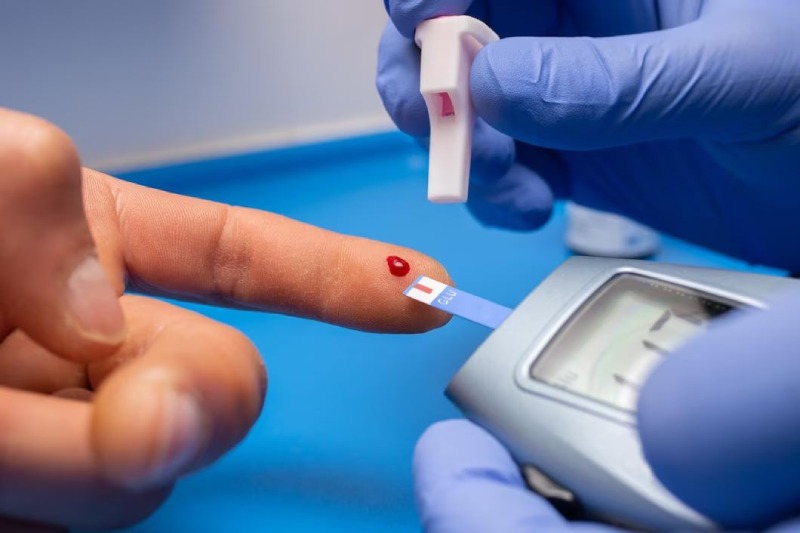Monitoring blood sugar levels is essential for managing diabetes and maintaining overall health. Different types of blood sugar tests provide unique insights into how your body processes glucose, helping you and your healthcare provider make informed decisions. This article explores various blood sugar tests, their purposes, and how they can impact your health management.
Introduction to Blood Sugar Testing
Blood sugar testing is a crucial tool for diagnosing and managing diabetes. By measuring glucose levels in your blood, these tests help track how well your body manages sugar and can alert you to potential issues before they become serious. Understanding the different types of tests available can help you better manage your health and work with your healthcare provider to adjust your treatment plan as needed.
Fasting Blood Sugar (FBS) Test
What It Is: The Fasting Blood Sugar test measures blood sugar levels after an overnight fast, usually performed in the morning.
Purpose: This test is commonly used to diagnose diabetes and prediabetes, giving a snapshot of how your body manages glucose without the influence of recent food intake.
How It Works: You will be asked to fast for 8-12 hours before the test, during which you can only consume water. A blood sample is taken, and your glucose level is measured.
Interpreting Results:
Normal: Less than 100 mg/dL
Prediabetes: 100-125 mg/dL
Diabetes: 126 mg/dL or higher
Oral Glucose Tolerance Test (OGTT)
What It Is: The Oral Glucose Tolerance Test measures blood sugar levels before and after consuming a sugary drink, assessing how well your body processes glucose over time.
Purpose: This test is often used to diagnose gestational diabetes during pregnancy and to assess insulin resistance in non-pregnant individuals.
How It Works: After fasting, your blood sugar is tested. Then, you drink a glucose solution, and your blood is tested again at intervals (usually at 1, 2, and sometimes 3 hours later).
Interpreting Results:
Normal: Less than 140 mg/dL after 2 hours
Prediabetes: 140-199 mg/dL after 2 hours
Diabetes: 200 mg/dL or higher after 2 hours
Hemoglobin A1C Test
What It Is: The Hemoglobin A1C test measures your average blood sugar levels over the past 2-3 months by assessing the percentage of hemoglobin coated with sugar.
Purpose: It is used both for diagnosing diabetes and for monitoring long-term glucose control in people with diabetes.
How It Works: A small blood sample is taken, which does not require fasting, making it a convenient option for regular monitoring.
Interpreting Results:
Normal: Below 5.7%
Prediabetes: 5.7% to 6.4%
Diabetes: 6.5% or higher
Random Blood Sugar Test
What It Is: The Random Blood Sugar test measures glucose levels at any time of day, regardless of when you last ate.
Purpose: This test is useful for quickly assessing blood sugar levels, especially when diabetes symptoms are present, such as excessive thirst, frequent urination, or unexplained weight loss.
How It Works: A blood sample is taken without the need for fasting, providing a quick check of your current glucose level.
Interpreting Results: Normal: Less than 140 mg/dL
Possible Diabetes: 200 mg/dL or higher
Continuous Glucose Monitoring (CGM)
What It Is: Continuous Glucose Monitoring involves wearing a small device that continuously measures glucose levels throughout the day and night.
Purpose: CGMs provide real-time data on glucose fluctuations, making them valuable for individuals with diabetes who need to closely manage their condition.
How It Works: A small sensor is placed under the skin, typically on the abdomen or arm, which sends glucose data to a monitor or smartphone app.
Interpreting Results: Provides trends and patterns in glucose levels, allowing for timely adjustments to diet, activity, or medication.
Conclusion
Understanding the different types of blood sugar tests is vital for managing diabetes effectively. Each test provides specific information that can guide treatment decisions and help prevent complications. Regular monitoring, combined with a healthy lifestyle and medical guidance, empowers individuals to take control of their health and maintain optimal blood sugar levels. Always consult with your healthcare provider to determine the best testing strategy for your needs.

 Diabetology2 weeks ago
Diabetology2 weeks ago
 Diabetology1 week ago
Diabetology1 week ago
 Diabetology5 days ago
Diabetology5 days ago
 Diabetology7 days ago
Diabetology7 days ago
 Diabetology7 days ago
Diabetology7 days ago
 Diabetology3 days ago
Diabetology3 days ago
 Diabetology3 days ago
Diabetology3 days ago
 Diabetology1 day ago
Diabetology1 day ago






